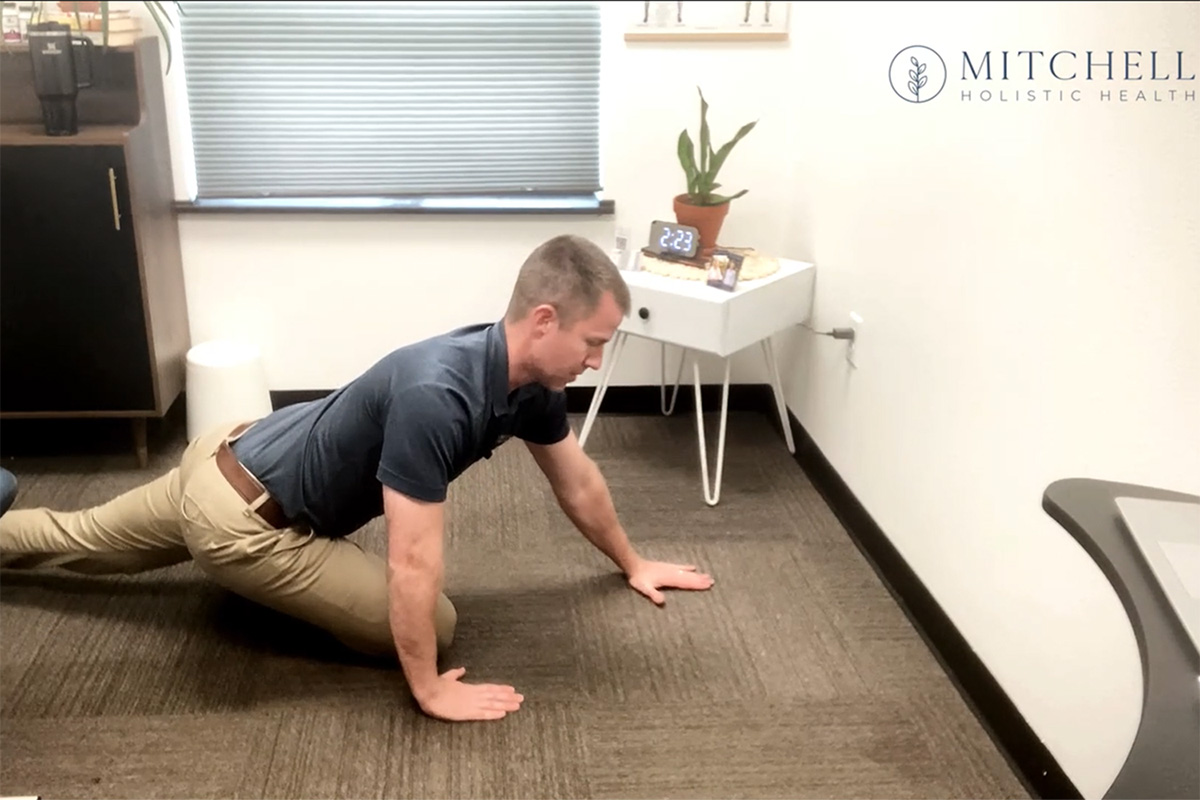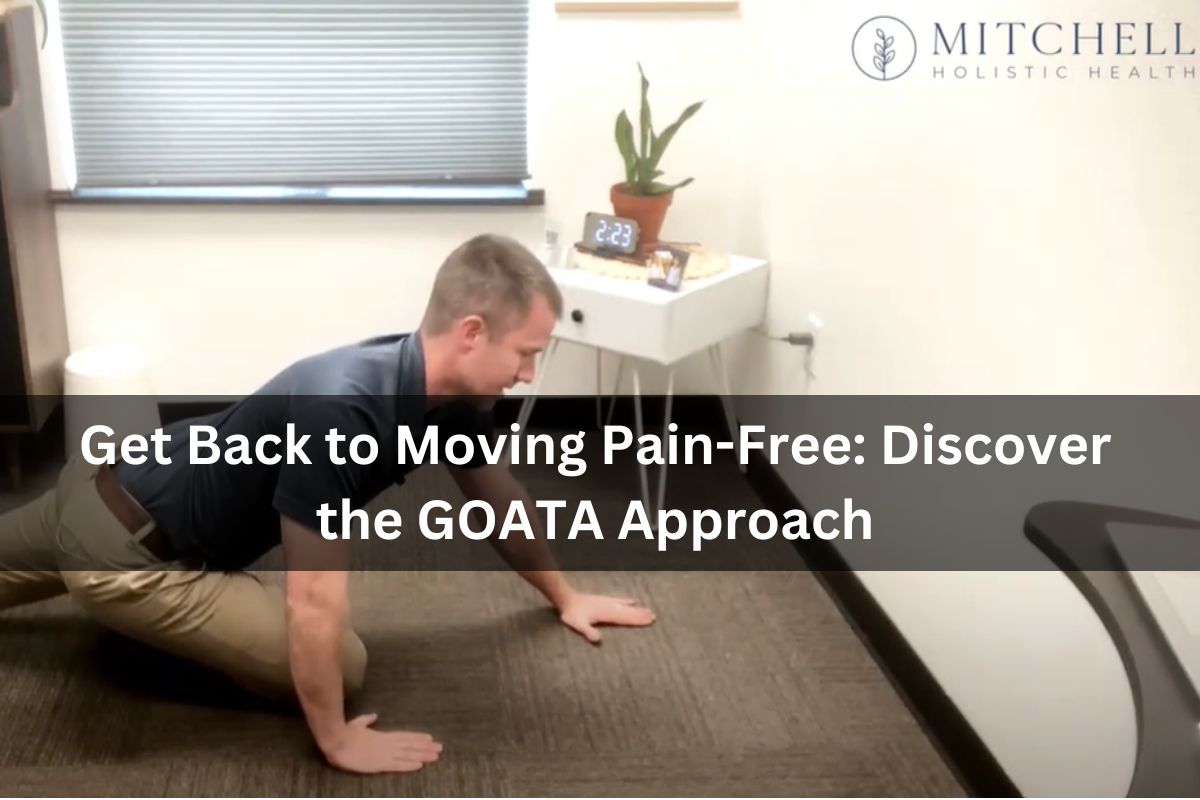Do you feel like your body just doesn’t move the way it used to? Whether you’re dealing with chronic pain or simply struggling to move as you did in your younger years, there may be a way to turn things around. Let me introduce you to the GOATA (Greatest of All Time Actions) approach—a revolutionary method that can help you move better, feel stronger, and get back to living pain-free.
I’m Phillip Mitchell, a holistic physical therapist at Mitchell Holistic Health in the La Crosse area, and I’m here to share with you an incredible method that has been changing lives. Over the course of my career, I’ve noticed that traditional therapy often focuses too much on isolated body parts. For example, if you have hip pain, most treatments concentrate solely on the hip without considering how other parts of the body, like the ankle, knee, or back, may contribute to the problem.
That’s where the GOATA approach comes in.
What Is the GOATA Approach?
GOATA stands for Greatest of All Time Actions, and it’s a system rooted in natural human movement. The first people to formulate GOATA methodologies, studied thousands of hours of footage from athletes, indigenous people, and everyday humans, revealing that the people who move efficiently tend to avoid injuries and feel their best, while those who move poorly are more prone to chronic issues and pain.
What they discovered is that our bodies have a natural blueprint for movement, but over time, many of us lose this innate ability due to factors like poor posture, training habits, and lifestyle choices. The good news? You can retrain your body to move the way it’s supposed to. Through GOATA training, you can get back to a pain-free, fully functional life by addressing the entire body as a system.
Why Traditional Therapy Isn’t Enough
A common frustration many people face is trying different forms of treatment—whether it’s physical therapy, injections, or chiropractic care—without finding relief. The missing piece? No one has looked at how your entire body is moving.
Let’s say you have back pain. If no one has evaluated how your ankle moves or how your foot interacts with the ground, then you’re not seeing the full picture. The foundation of your body, starting from the ground up, plays a crucial role in how everything else functions.
The GOATA approach looks at the body as a whole system. When we identify where your movement dysfunction lies, we can target those areas and decompress the body, leading to less stress on your joints and a smoother, more efficient movement pattern. According to the CDC, approximately 20% of U.S. adults (about 50 million people) experience chronic pain, and many of these cases are related to musculoskeletal issues, which could benefit from approaches like GOATA.
How GOATA Works: The Power of Decompression
One of the key focuses of GOATA is understanding the body as a pressure system. Think about how we move when we walk: we load one leg, transfer weight to the other, and then release that weight. If any of these phases are compromised, you may experience pain or dysfunction.
By identifying where you’re not moving efficiently, GOATA helps decompress those areas, reducing stress throughout the musculoskeletal system. When your body isn’t working overtime just to function, aches and pains begin to disappear. The beauty of this approach is that it’s fixable—you can retrain your brain and body to move the way you were designed to.
Research shows that multidisciplinary approaches, including physical therapy, lead to significant long-term improvements in pain relief and functional status for chronic low back pain sufferers. Just like physical therapy, GOATA can provide a comprehensive solution by addressing the root of inefficient movement, offering relief from chronic pain, and helping you regain natural, pain-free movement.
Three Simple Exercises to Get You Started

To help you begin your journey with GOATA, here are three exercises that can help rewire your body. These exercises will only take a few minutes each day, but consistency is key.
1. Seiza Sitting Position
Instead of lounging on a couch where your hips are pushed forward, try the Seiza sitting position, which is common in yoga and among indigenous populations.
- Sit on the ground with your feet behind you and your heels turned outward.
- Ensure that your hips are behind your rib cage, and sit tall with your butt resting on your heels.
- You’ll feel the stretch in your ankles, knees, and hips as you engage in this position.
This position helps restore natural alignment and takes the pressure off areas that may have been overworked due to improper sitting habits.
2. Bow Hip Stretch
Stiff hips can create imbalances throughout your body, leading to pain in other areas. The Bow Hip Stretch helps loosen up tight hips.
- Start on all fours.
- Bring one hand back and the opposite hand forward.
- Drop one leg underneath you and the other behind you, similar to a modified pigeon pose.
- Rotate your chest toward the knee and sit back into your hip, holding for 40-45 seconds on each side.
This stretch helps the hips move more freely, preventing stiffness and pain.
3. Side-to-Side Rocker
This exercise helps with proper weight distribution and foot placement, which are key to pain-free movement.
- Start on all fours with your knees two fists’ width apart and your feet back, with heels turned outward.
- Sit halfway down, keeping your tailbone back.
- Place one hand on your chest and the other in front of your armpit.
- Slowly rock from side to side, learning to properly load weight into your legs.
Do two sets of 20 reps on each side. This exercise improves coordination between your foot, knee, and hip, helping them work together optimally when you’re standing, walking, or running.
Start Moving Better Today
These three exercises are just the beginning of the GOATA approach, and they can set you on the path to retraining your body. Try incorporating them into your daily routine for the next two weeks, and you’ll likely start to notice improvements in how your body feels and moves.
After that, we’ll dive into more advanced movements to further enhance your progress, including more information on what is GOATA training. Remember, the goal is to restore your body’s natural movement patterns, so you can move better and live pain-free once again.
Stay consistent, and I’ll be back with more exercises and holistic movement therapy to take you to the next level.
FAQs
1. What is the GOATA approach?
The GOATA approach (Greatest of All Time Actions) is a movement system that retrains the body to follow its natural blueprint, helping people move efficiently and avoid pain or injury.
2. How does GOATA help with chronic pain?
GOATA addresses movement dysfunctions by analyzing the entire body as a system, identifying and correcting areas that aren’t moving well, which reduces stress on joints and muscles.
3. What exercises can I do to start with GOATA?
Three simple exercises you can try are the Seiza sitting position, the Bow Hip Stretch, and the Side-to-Side Rocker. These help restore proper alignment and movement patterns.

